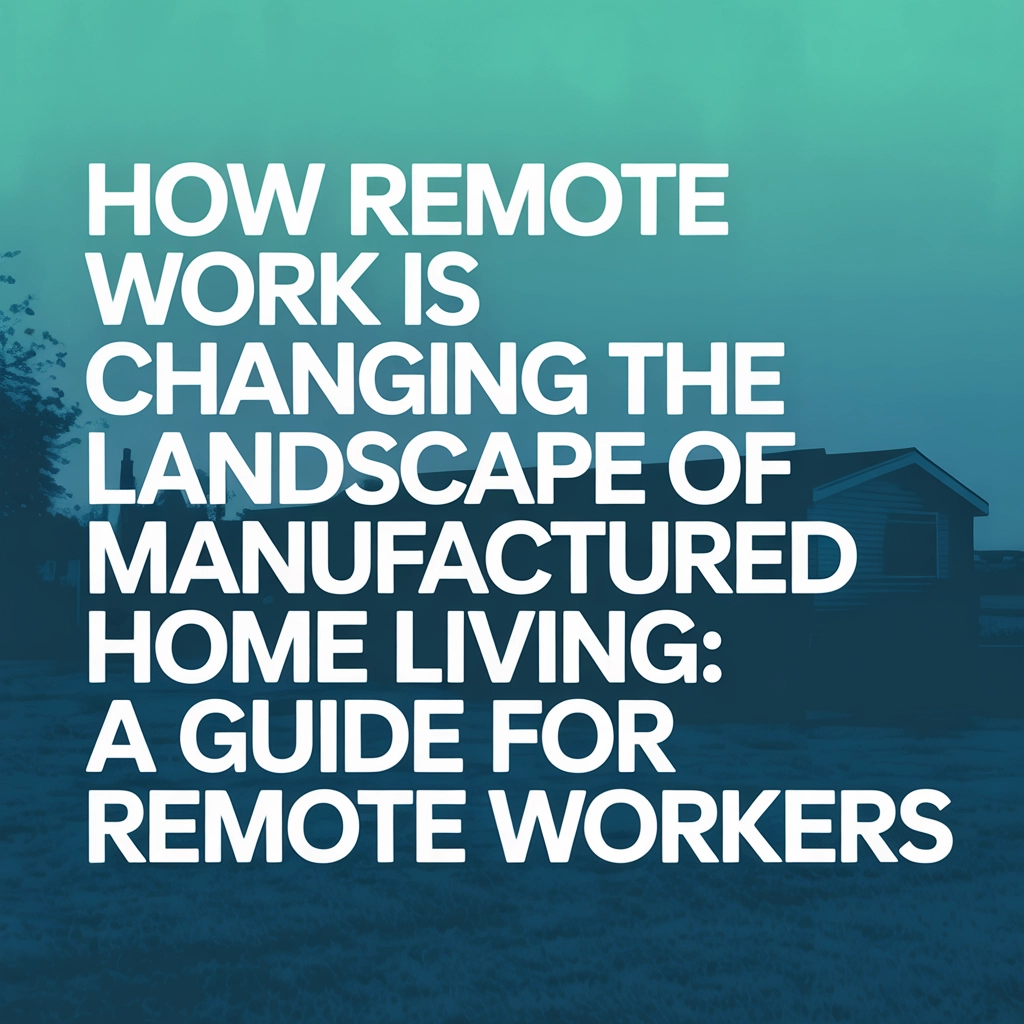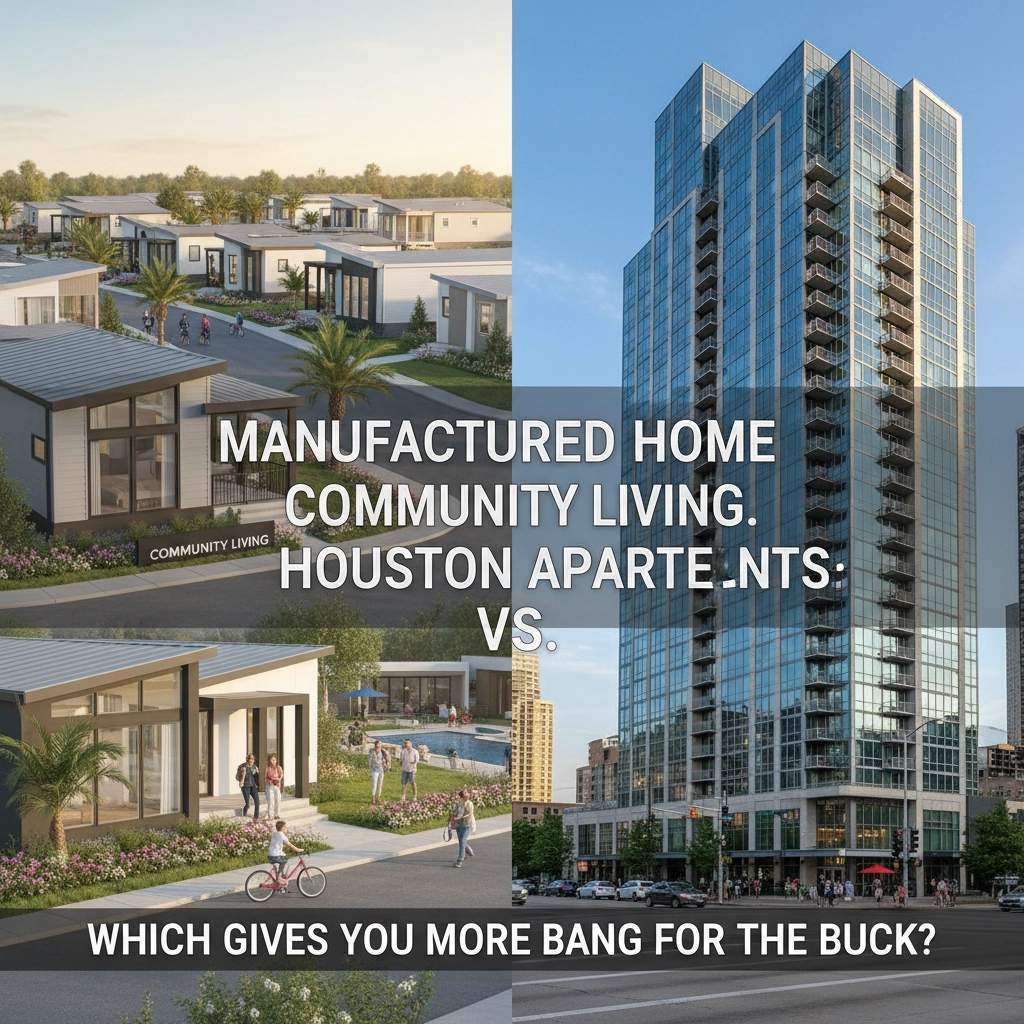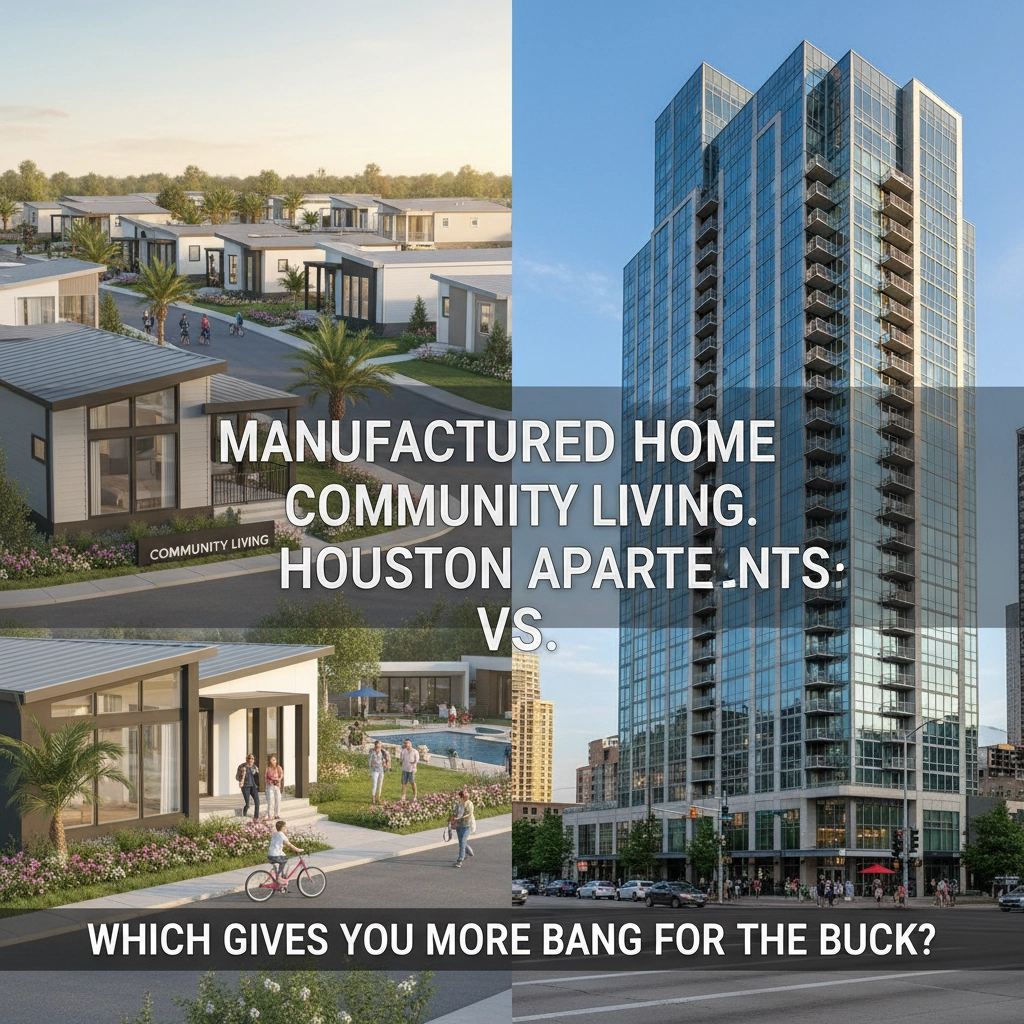Remote Work Has Changed What “Home” Means
In the last few years, remote work has totally rebalanced how people value home size, location, and amenities. With so many jobs now unconstrained by a commute, home shoppers are rethinking priorities: it’s not about your drive time, it’s about your WiFi, workspace, and the neighborhood you live in.
For remote workers, affordable living, great internet, and a dedicated home office are must-haves. This is where manufactured homes—and manufactured home communities like Piney Woods—have become a standout choice.
1. Remote Work: Trends That Reshape Housing Choices
From Driving Downtown to Thriving at Home
Today’s workforce is less tied to urban centers and more focused on quality of life. Where you live doesn’t have to follow where you work.
Recent industry commentary puts it simply: “The decoupling of jobs from offices has unlocked housing choices that were previously impractical because of commuting constraints.” Now, remote workers are free to chase:
- Extra bedrooms and flex rooms for a true home office
- Lower monthly housing costs, redirecting money to savings, travel, or upgrades
- Locations that actually make them happy—rural quiet, suburban convenience, or exurban adventure
Manufactured homes for remote workers tick all these boxes. Many buyers are surprised by just how quickly they can transition to a comfortable, productive space without breaking the bank.

Manufactured Homes: Why Remote Workers Are Taking Notice
- Affordability: Lower price point than traditional homes or rentals, with reduced property taxes and utility bills.
- Move-in Speed: Factory construction means you’re not waiting months as with site-built homes—sometimes just weeks.
- Flexible Floor Plans: Modern manufactured and modular homes are designed with open concepts, home offices, and smart layouts that let you set up a real workspace.
- Community Living: Manufactured home communities increasingly offer fiber internet, shared office space, dog parks, trails, and fitness centers.
What does this mean for the market? According to Pew Research and McKinsey, housing demand is shifting to lower-cost regions, with more buyers looking for homes that fit a “work from anywhere” lifestyle. The manufactured housing sector is meeting this demand with modern, tech-ready options.
2. Manufactured Homes: The Affordable Upside for Remote Workers
Comparing Costs: Manufactured vs. Traditional Living
Let’s get real about numbers. Manufactured homes commonly cost 20–50% less per square foot than traditional site-built homes. Here’s a typical comparison in today’s Texas market:
- Traditional single-family mortgage + taxes: $2,000–$4,000/month
- Manufactured home (with owned land): $1,200–$2,500/month
- Manufactured home (in a community, with lot rent): $900–$2,000/month
For remote workers just getting started, these savings can make a huge difference. Lower upfront costs also make it easier for renters to become homeowners.
Budget Planning: From Set-Up to Everyday Life
If you’re considering buying in a manufactured community, don’t forget these essentials:
- Upgraded internet service (crucial for telecommuting)
- Dedicated office furniture (desk, chair, monitor, webcams)
- Utility costs for heating/cooling your office space during work hours
- Lot rent/HOA fees, home insurance, and—if you plan to claim a home office deduction—potential tax advantages
Handy Budget Checklist:
- One-time office setup: $500–$3,000
- Upgraded internet and utilities: $50–$200/month
- Home maintenance and contingency: 1–3% of property value/year

Financing, Resale & Long-Term Value
- Chattel Loans: Common for homes not permanently affixed to land.
- FHA/Conventional Mortgages: Available when the home is titled with owned land (see Financing Options for First-Time Manufactured Home Buyers).
- Land Ownership: Consider buying your home and land together to appreciate equity over time, just like site-built homes.
Smart move: Before you buy, decide if you want to own the land or just the home. This will shape your financing options and potential for building equity!
3. Designing Your Ideal Home Office in a Manufactured Home
Floor Plans and Space Hacks
Flexibility is the name of the game. Manufactured homes can easily accommodate productive, private workspaces:
- Convert a spare bedroom or den into a lockable office.
- Use modular furniture (fold-down desks, rolling shelves).
- Add curtains, screens, or bookshelves for noise and visual barriers.
- For smaller homes: carve out a work nook in the living room, with storage for easy cleanup.
Want inspiration for turning a manufactured home into a remote work haven? Check out The Step-by-Step Process of Manufacturing a Home for behind-the-scenes details.
Must-Have Tech: Connectivity Comes First
- Fiber or high-speed cable internet is king. Always confirm coverage before signing.
- Backup options like a cellular hotspot or a second provider can save your workday.
- Uninterruptible Power Supply (UPS) and surge protectors can prevent lost work (and lost tempers).
- Smart home upgrades like mesh Wi-Fi systems, smart thermostats, and video doorbells can boost comfort and security.
Heads up: The FCC offers a broadband map to check service providers in any area.

Ergonomics & Wellness in Manufactured Living
- Invest in an ergonomic chair and adjustable desk.
- Ensure natural lighting and good airflow.
- Use noise-reducing rugs, wall panels, or even plants to enhance your work zone.
- Put your office on the quietest side of the house for focus—or consider a backyard ADU for full separation if your work demands privacy.
4. Manufactured Communities: Amenities Built for Remote Life
What Modern Communities Offer
Today’s manufactured home communities are more than just rows of homes. If you’re a remote worker, look for:
- Coworking lounges or reservable meeting rooms
- Reliable, fast internet in all common areas
- Fitness centers, walking trails, and dog parks for mental breaks
- Secure package drop-off and mail services
- Events, meetups, and clubs to prevent isolation and build professional (and personal) networks
This new breed of community makes it easier to work from home without feeling disconnected.
Sharing Resources, Building Community
- Shared coworking spaces = fewer distractions at home and a place to meet clients, collaborate, or just network
- Maintenance and HOA services often handle repairs, landscaping, and general upkeep, giving you more time (and headspace!) for work and life
- Organized events bring together like-minded professionals, making it easier to maintain a balanced social life right where you live
5. Choosing the Right Place: Location, Rules & Lifestyle
Smart Questions for Your Search
When shopping for a manufactured home community, ask:
- What’s the actual internet speed, and can I get fiber?
- How close is it to healthcare, groceries, and schools (if needed)?
- What are lot rents and typical HOA restrictions?
- Does the community allow home-based businesses, or are there rules around client traffic?
Refer to Understanding Manufactured Housing: Breaking Down the Basics for more orientation on how these communities work.
Legal and Zoning Pitfalls to Watch
- Double-check covenants and local zoning: some communities may limit signage, business visitors, or number of vehicles.
- Ensure your homeowner’s or renter’s insurance covers business use if you’re running a company from home.
“Always confirm community covenants and local zoning before launching a home-based business from a manufactured home.”
Safety and Family Needs
Looking to settle with family? Make sure to vet proximity to medical services, schools, playgrounds, and consider communities with enhanced safety measures like gated entry or security patrols.
6. From Decision to Move-In: Making It Happen
Touring & Evaluation Checklist
When you’re ready to tour communities and homes, be sure to:
- Confirm the size and suitability of your intended office space
- Run speed tests on-site at various times of day—don’t take just anyone’s word for it!
- Inspect HVAC, insulation, and noise sources
- Ask about community rules for business use, visitors, and deliveries
Quick Move-In Checklist:
- Get financing (2–6 weeks)
- Home delivery/setup (1–6 weeks)
- Arrange utilities and internet install in advance
- Schedule insurance to kick in the day you move
For deeper tips on moving into a manufactured home, read How to Purchase a Manufactured Home and Land.
Getting Comfortable, Fast
- Introduce yourself to neighbors and community management
- Find and reserve shared working spaces early
- Attend events to get connected
- Complete your office setup and run “test days” before full-time work begins
- Identify local pros for quick fixes—no more waiting hours on hold for help!
In Summary: Your Next Steps
Remote work is changing everything about where and how we live—and manufactured homes have moved to the front of the line for remote workers who demand flexibility, comfort, and affordability.
To get started:
- Research communities and internet options
- Compare costs, amenities, and policies
- Use this checklist on your first tours
Copy-and-Paste Quick Touring Checklist:
- Verify dedicated room size or flex space for office
- Run a speed test on-site at multiple times
- Ask about lot rent, HOA fees, and pet rules
- Confirm zoning rules for home-based clients or signage
- Inspect HVAC, insulation, and soundproofing
For more expert insights, check out our guide to The Pros and Cons of Manufactured Homes and explore community options at Piney Woods Manufactured Home Community.
Happy remote working—and happy house hunting!



